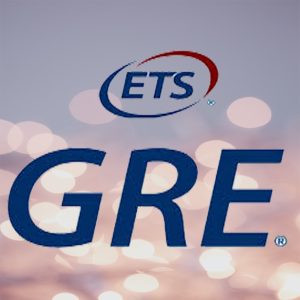The Physics Olympiad program follows the following 5 stages-
- Stage I: NSEP- National Standard Examination in Physics
- Stage II: INPhO- Indian National Physics Olympiad
- Stage III: OCSC- The Orientation cum Selection Camp inPphysics
- Stage IV: PDT- Pre-departure Training Camp for IPhO
- Stage V: IPhO- Participation in International Physics Olympiad
Stage I, the National Standard Examination is entirely the responsibility of Indian Association of Physics Teachers. All the remaining stages are organized by HBCSE. NSEP is essential to be qualified so as to participate in the INPhO.
Eligibility, Syllabus and Structure
Following is the detailed information about eligibility and structure of NSEP and INPhO in detail. It is very important to learn about NSEP before you gear up for the INPhO.
- Stage I: NSEP- National Standard Examination in Physics
NSEP is the first stage in selection of students for the physics Olympiad Programme, which is organised by the IAPT- Indian Association of Physics Teachers. Every student aspiring to go through the successive stages of the programme, must enroll for NSEP. National Standard Examination in Physics is held at a large number of centers in the country.
NSEP is an examination of 2 hours. NSEP 2017 – 2018 was held on November 26, Sunday, for which the last date of enrolment was September 15, 2016.
-
Eligibility:
All Indian students who are born on or after July 1st, 1998 and also, are in addition, in Class XII or lower as of November 30th, 2017 were eligible to appear for NSEP 2017 – 2018. Any student may appear for more than one subject in NSEP provided the examination schedule allows it. For this you would have to check the examination schedule pertaining to different subjects. Also, the students who have passed Class XII are not eligible to enrol for NSEP exam.
It is entirely a student’s responsibility to ensure that the eligibility criteria are satisfied before he or she applies for the exam. In case at any stage of the programme it is found that the student does not satisfy the eligibility criteria, thenhe or she may be disqualified from the programme.
-
Syllabus:
The detailed guidelines for NSEP syllabus is not given but it is roughly estimated to be of the Class 11th and 12th standards (CBSE board). Those students who are interested in INPhO must start preparing for it directly as the detailed syllabus of INPhO is listed out below (find in the INPhO section below). In such a way NSEP syllabus will automatically get covered.
-
Exam Pattern and Structure
NSEP exam does not emphasize on rote memory, but the comprehension of the structure.
The format is as follows:
Exam Pattern and Structure |
||
| Part A (180 marks)
|
50 multiple choice questions consisting of- | |
| (A1) | 40 questions.
Each question with only one of the four options is correct |
|
| (A2) | 10 questions.
Each question with one or more than one options can be right. To get credit, no incorrect option or options should be marked and all correct option or options must be marked. |
|
| Part B (60 marks) | 5 or 6 questions are problems or short-answer type questions. All the questions carry equal marks. | |
| Language: | English universal.
However, the NSEP question papers may be available in Hindi, and other regional languages provided that there are more than 300 students for that language. However, this has to be checked with IAPT. |
|
- Qualifying for the Second Stage:
The aim of the first stage examination is to have a wide range, then to progressively increase this reach,then to attain nationwide representation for stage II without overly compromising on merit or quality. Thus the selection to the stage II examinations i.e. the Indian National Olympiad Examinations (INOs) is based on the following structure-
a. Eligibility Clause: Any participating candidate must secure a score equal to or greater than a Minimum Admissible Score (or MAS) to be eligible for the Stage II INO exam leading to the International Olympiad. By default, the MAS for a given subject will be 40% of the maximum score in that subject.
b. Proportional Representation Clause (PRC): The number of students selected for Stage II (INO) in each subject is around 300 students. Hence, in the event of a tie at the last position in the list, all students with the same marks at this position will qualify to appear for the Stage II examinations. However, the selected students must nevertheless satisfy the eligibility clause laid out above.
c.Minimum Representation Clause (MRC): Notwithstanding the proportional representation clause as explained above, the number of students selected for INO from each State and UT must be at least 1, provided that the eligibility clause is satisfied thoroughly.
d.Merit Clause: Given the eligibility clause as stated above, it is conceivable that 300 students may not qualify for Stage II in a subject. In a case like this, the shortfall (less from 300) will be selected based purely on merit without further consideration to proportional representation and minimum representation clauses. Thus in the event of a tie at the last position in the list all students with the same marks at this position will qualify to appear for the Stage II examination.
Note: There will be no other criterion or provision for selection to the Indian National Olympiad Examinations (INOs).
All students who qualify to appear for the INPhO get a certificate of merit from IAPT.
- Stage II: INPhO- Indian National Physics Olympiad
The Indian National Physics Olympiad is organized by HBCSE in about 15 centres in the country.
Eligibility:
- Students selected from Stage I examination (i.e. NSEP) are eligible to appear for INPhO.
- In addition, those students who have represented India in International Physics Olympiad (IPhO) in the previous year, need not appear for the first stage NSEP examination in physics. They may be allowed on special request to the National Coordinator for the respective subjects, to directly appear for the second stage i.e.- Indian National Physics Olympiad (INPhO) examination, in case they satisfy other eligibility criteria like as age, class, etc. which are applicable for the Physics Olympiad.
Exam Pattern and Structure
The INPhO duration is of 3 hours. INPhO 2017-2018 happened on January 31st, 2018, Saturday. The date and time information of the exam is usually given out on HBCSE site in the 1st week of January every year. The tentative date and time of INPhO 2018 examination is as follows:
The confirmed schedule and date is hosted on the site and also communicated to the eligible students by post, so that no one misses out this crucial information. Students who appear for INPhO are eligible for Travel Allowance and Dearness Allowance as per the norms of the programme.





Reviews
There are no reviews yet.